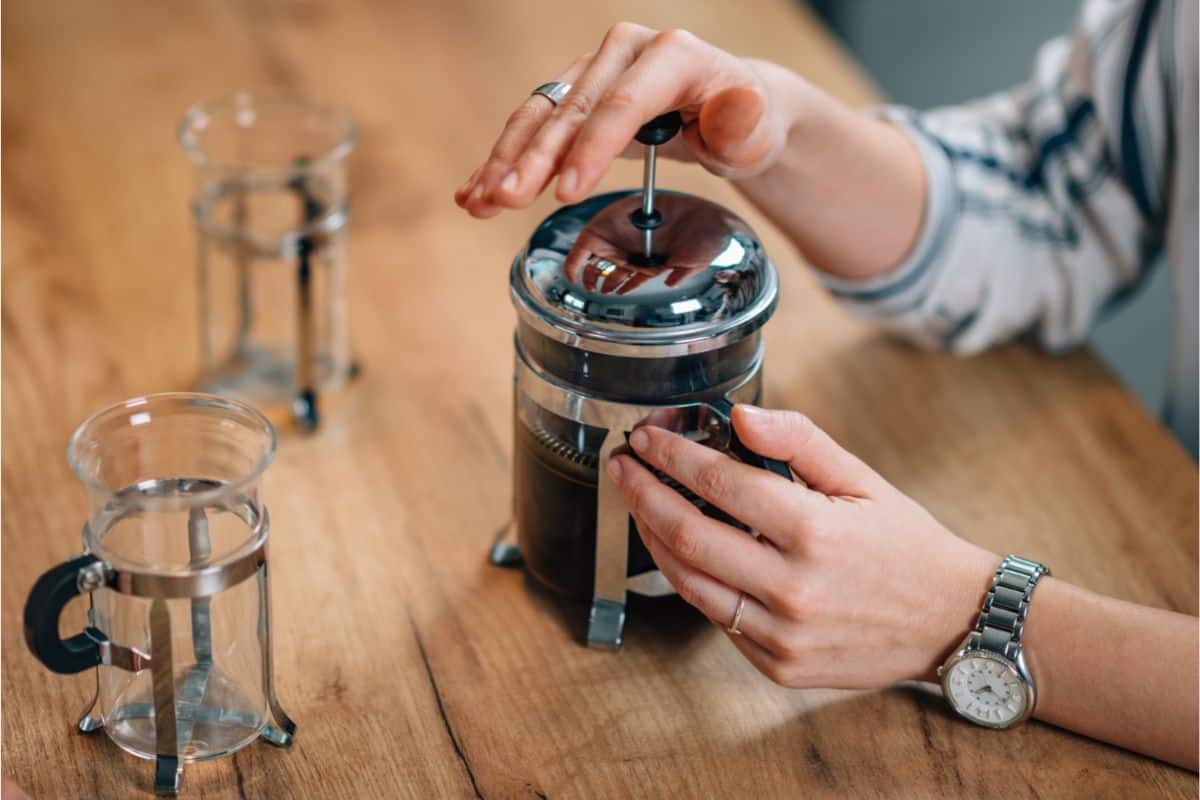Last Updated on December 3, 2023
I love my French press. Even with a kitchen full of fancy brewing tools, I still turn to my French press on a regular basis. I love its ease, and the results are always delicious.
It’s a simple method, with a lot of forgiveness, but what many people don’t know is that it’s also a great tool for experimentation.
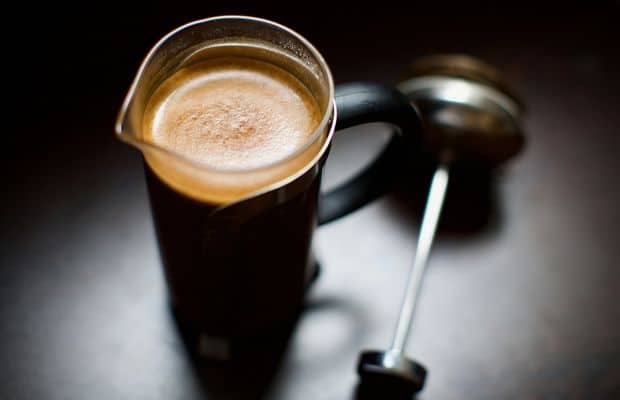
French press coffee is typically made with coarsely ground coffee, but you may be wondering if it’s possible to brew French press using finely ground coffee. The short answer is yes. The long answer is that successfully brewing French press with a fine grind will greatly depend on a few additional factors, which we’ll explore here in some depth.
Variables in French Press Brewing
To understand why we typically use a coarse grind for French press coffee, it’s important to look a bit deeper at how the process actually works.
You are likely familiar with the basic steps: grind beans coarsely with your coffee grinder, place ground beans in carafe, add hot water, steep, plunge, enjoy. The simplicity of the method is one of its greatest charms, and the final product is typically a rich, robust, and slightly oily cup of coffee. This standard method is extremely forgiving, and your ratio and timing need not be as exact as they do for something like espresso.
Each factor can, however, be adjusted to manipulate the end result, including using a finer grind.
Grind Size
As mentioned, the immersion method of a French press means that your grounds steep in hot water, typically for around four minutes, in some case up to seven minutes. Coarse ground coffee allows for a slower extraction, because it takes water longer to pull flavor compounds out of larger individual coffee particles.
When using a fine grind, extraction will happen more quickly than it does with a coarser grind. If you don’t adjust the other metrics involved, you’ll end up with an over-extracted cup, which may taste bitter and lack clarity of flavor.
The French press tool itself is not designed for finely ground coffee. Most of them use a coarse mesh metal filter that allows fine coffee particles through. This will contribute to a muddy texture, and potentially, undesirable grounds in your cup. You may choose to further filter your coffee when pouring, by using an additional super fine metal strainer, a paper filter, or even cheesecloth.
Amount of Coffee
There is no hard and fast rule for French press ratios. A coffee-to-water ratio of anywhere from 1:10 to 1:16 is common. The French press is a very forgiving method, and you’d have to travel quite far outside that range to make an undrinkable cup of coffee.
If you’re like me, what you’re searching for is the perfect cup of coffee. That is very personal. I prefer a full-bodied, robust brew with a luscious, oily mouthfeel, so I tend to use a ratio with more coffee in relation to the water.
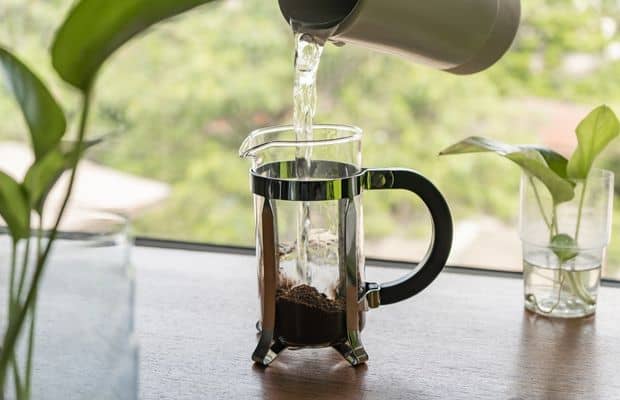
When using a finer grind, however, I’ll definitely dilute the ratio a bit. A concentrated ratio of finely ground coffee will not only lead to a muddy body and bitter flavor, but it can also become unwieldy inside the press itself. If your press becomes difficult to plunge, you have likely used too much coffee and will want to decrease the amount of grounds.
Water Temperature
When brewing coffee, hot water interacts with coffee particles, extracting flavors, aromas and caffeine. As water gets hotter, its molecules gain energy, moving more quickly and creating more interaction with the coffee particles. This is why hotter water extracts coffee more quickly.
The ideal temperature for brewing a French press is between 195-200F. Using water above this temperature can lead to over-extraction, and if the water is too cool, it will under-extract.
Cold brew, however, is made using room temperature water and a very long extraction period— anywhere from 12-24 hours.
By controlling the different metrics involved in our brew process we can control the extraction. If you’re using finer ground coffee, you may want to slightly lower your water temperature. Simply let it sit for 1-2 minutes off the boil. You will also likely want to slightly shorten your extraction time as well.
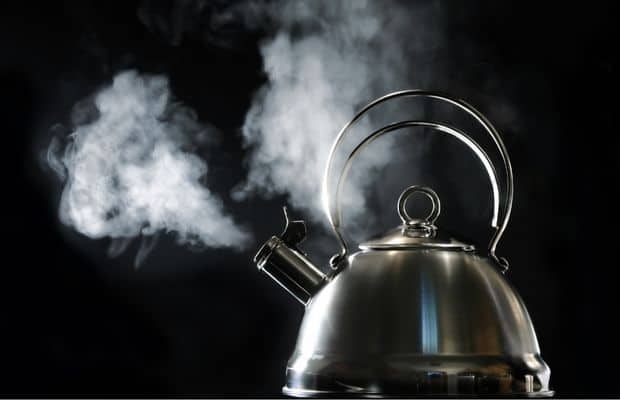
Brewing Time
We’ve touched on this briefly, but experimenting with the length of your brewing time can affect your extraction, and you’ll likely want to decrease it when using a finer grind. Due to the smaller surface area, fine grinds will be extracted more quickly and over-extraction can happen quite easily.
The ideal timing for a classic French press method is four minutes. Some baristas like to play with longer steeping periods, but they are likely adjusting other variables as well.
Different flavors will be extracted throughout the process, so experimenting with your steeping period can be a fun way to discover the nuances of a particular coffee. As a general rule, if brewing a French press with a finer grind, you’ll want to slightly decrease your brew time. Three minutes will still allow for sufficient extraction, so you might want to start there and then incrementally increase your brew time until you reach your desired results.
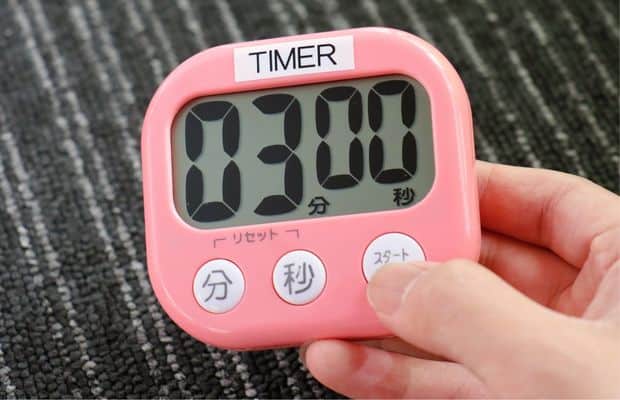
Filtering Fine Grounds Out of Your French Press
When using a finer grind in a French press, you will likely end up with more coffee particles sneaking past the course metal filter and finding their way into your cup.
The easiest way to reduce the level of coffee bits in your cup is by letting your press rest for an additional minute or so after you’ve plunged. This will allow the grounds to settle at the bottom of the carafe and they’ll be less likely to affect your cup.
If you really can’t stand any grounds in your coffee, or simply prefer a cleaner, less oily cup, you can use an additional filtration method.
Fine metal strainer
Pouring your coffee through a fine metal strainer will catch errant grounds, while still allowing some of the oils and other solubles to pass through. This will affect your flavor profile the least, and you should still have a fairly full and robust profile typical of the French press method.
It’s not going to catch a very fine grind, but should do reasonably well with a medium grind.
Paper filter
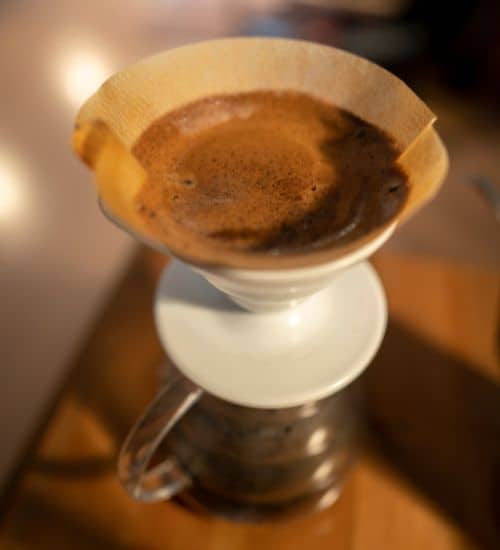
Running your coffee through a paper filter will strain out grounds and sediment, as well as hold back oils and other solubles, so you’ll get a much brighter, cleaner cup.
Cheesecloth
Cheesecloth sits somewhere between a metal and paper filter. A single layer of cheesecloth will catch grounds while still allowing a decent amount of oils and other solubles through. The handy thing with cheesecloth is that you can fold it over as many times as you like to create a tighter mesh and more thorough filtration.
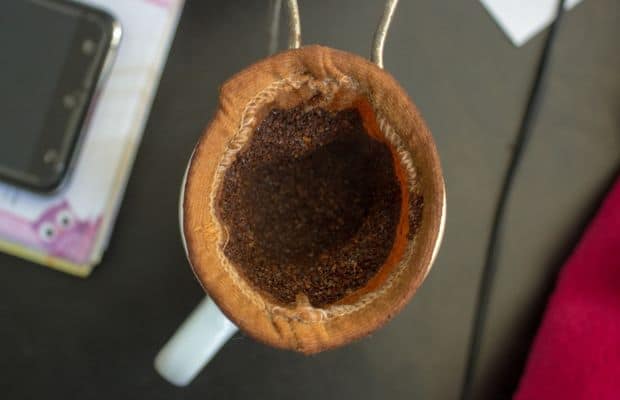
French press brewing remains popular after all these years because of its simplicity, technical forgiveness, and ability to brew an amazing cup of coffee. A medium to coarse grind is ideal, but if you find yourself in a situation where only pre-ground coffee is available and it’s a fine grind, you can adjust other variables in your process and still brew a fantastic cup of coffee.
You may even want to start experimenting with your French press to see how you can fine-tune your process to explore the nuances of your favorite type of coffee.

